
| 產品快速搜尋 |



UV/ Ozone
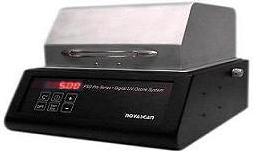

Harrick Plasma O2 Plasma Cleaner 電漿清洗機
Surface Cleaning and Treatment,Ashing,Etching
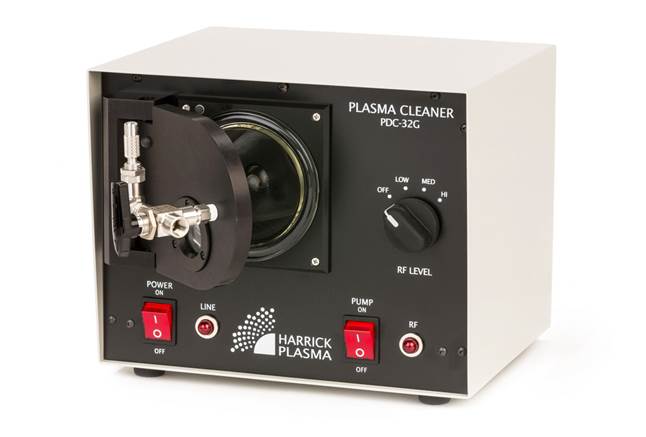
Physics of Plasma — what plasma is, how it is generated and sustained, and the basics of how it interacts with a material surface
Plasma Advantages — the advantages of plasma surface treatment for the surface itself, process flexibility and consistency, low-cost, ease-of-use, and user and environmental safety
Plasma-Surface Interaction — the fundamental modalities of plasma-surface interaction: ablation, activation, crosslinking and deposition
Plasma Process Gases — Air,O2,N2,Ar,H2 : a guide to the use of different plasma process gases for chemical and mechanical contamination removal, oxidation, activation, crosslinking and deposition
Plasma Cleaner Information
Plasma Cleaner Features
— Plasma Cleaner product features, model options, device requirements
and applied power settings
Plasma Accessory Features — product features of our PlasmaFlo gas mixing/metering and vacuum pump accessories
Details of Operation — basic principles of operation, details of operational procedure and general guidance on surface cleaning and modification
Ordering Information — contact and ordering information for our low-cost Plasma Cleaner models and PlasmaFlo gas mixing/metering and vacuum pump accessories
Technical References — a partial listing of technical articles and patents that reference the use of our Plasma Cleaner models
Specific Plasma Applications
Plasma
Applications: Plasma Cleaning
— the advantages of plasma cleaning for surface preparation prior
to bonding and other applications; ATR measurements demonstrating contaminant
removal following plasma cleaning
Plasma Applications: Polymers — surface cleaning and surface treatment of polymers, surface restructuring through polymer crosslinking, chemical surface modification through activation and grafting, and polymer surface deposition
Plasma Applications: Biomaterials — sterilization of medical instruments, adhesion promotion of biomaterials, alteration of biomaterial wetting properties, deposition of biomaterial coatings and plasma enhancement of biocompatibility
PDC-32G Basic Plasma Cleaner
with 3 " diameter
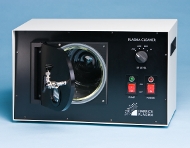
PDC-001 Expanded Plasma Cleaner with 6" diameter
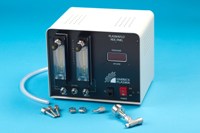
PlasmaFlo
PlasmaFlo is an optional process gas flow mixer and pressure monitor for
Dual gas feeds for process gas mixing
Digital display thermocouple vacuum gauge for measuring total chamber pressure
KD Syringe Pump
PDC-32G Basic Plasma Cleaner
PDC-001 Expanded Plasma Cleaner
Key applications areas :
include of :
materials science, polymer science, biomedical materials, sterilization of dental and medical implants and instruments,optical cleaning and micro-fluidicssurface cleaning, surface sterilization, surface activation, surface energy alteration, surface preparation for bonding and adhesion,PDMS bondong, modification of surface chemistry,General Plasma Information
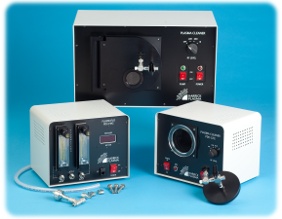
Processing Methods
• General processing sequence
1. Pattern PDMS by replica molding from a master mold
2. Oxidize PDMS in O2 or air plasma, etching hydrocarbons and leaving silanol
(SiOH) groups on the surface, rendering the surface hydrophilic
3. Place in contact with another oxidized PDMS or glass surface to form bridging
Si-O-Si bond at the interface, creating an irreversible seal
• Suggested process protocol guidelines and process parameter values for plasma
treatment of PDMS using a Harrick Plasma Cleaner (some experimentation may
be required to optimize process)
1. Use oxygen (O2) or room air as the process gas
2. Pressure: 100 mTorr to 1 Torr
3. RF power: Medium or High
4. Process time: 20-60 seconds
5. An example protocol for PDMS plasma treatment using a Harrick Plasma cleaner
as demonstrated in a video published by the Jeon Research Group
http://www.jove.com/index/Details.stp?ID=261
